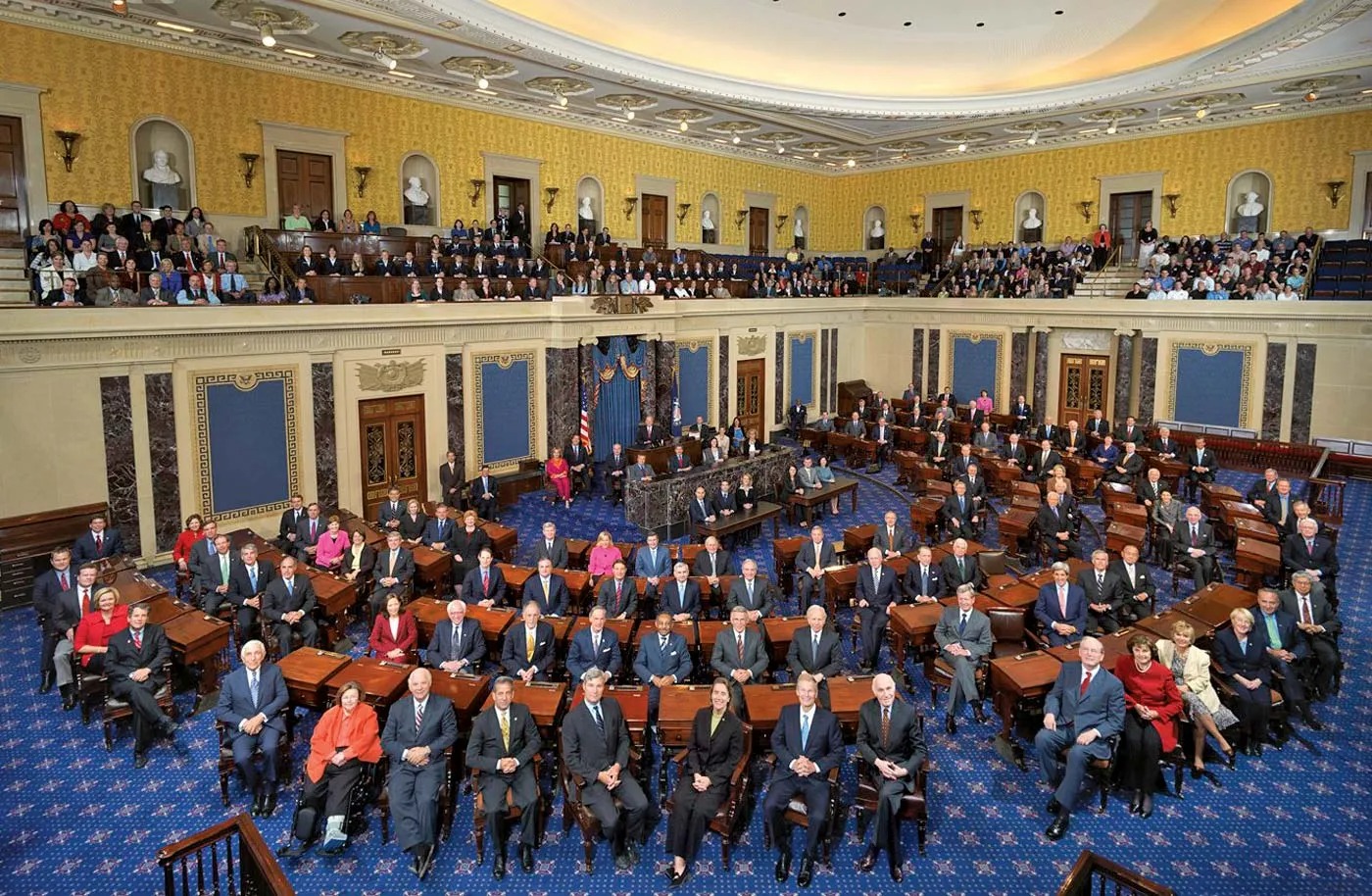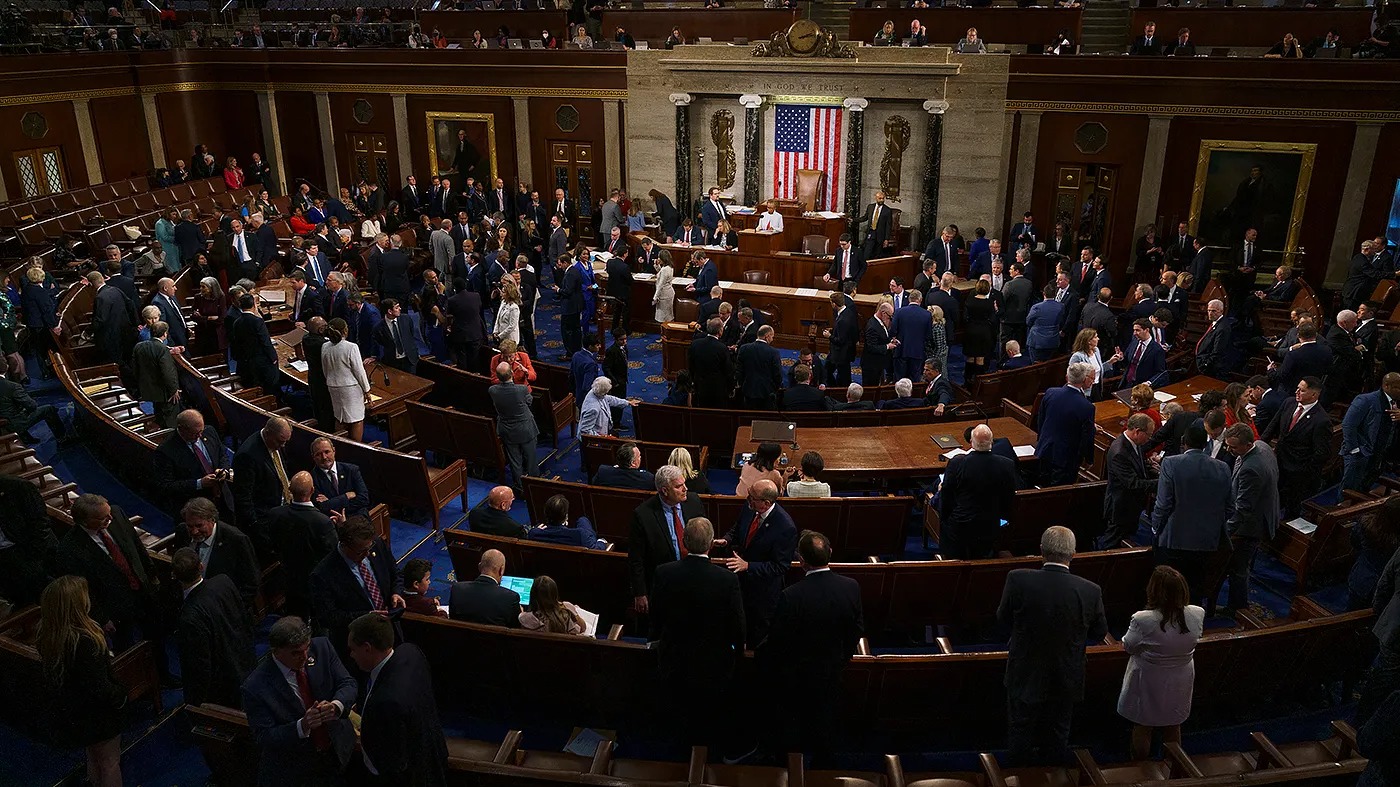As the Senate elections approach in the fall, Democrats find themselves defending more seats in challenging political terrain than in any other election during the 2020s.
The states Democrats must defend include the final three Senate seats in states that voted for Donald Trump in 2020, along with five more in states that President Joe Biden won by 3 percentage points or less.
In contrast, Republicans are not defending any Senate seats in states that voted against Trump or preferred him by 3 points or less. This situation underscores the high stakes for Democrats in Biden improving his position in key swing states by November.

US Senate (Credits: Britannica)
Modern Senate elections have seen a strong correlation between states voting for the president and the Senate, making it challenging for candidates from either party to win seats in states that typically vote differently for the president.
If Democrats fail to break this trend in the upcoming elections, Biden’s fate in November could not only determine the Senate’s control in 2025 but also shape the political landscape for years to come.
A strong recovery by Biden in swing states could keep Democrats competitive in the Senate battle, even if they lose the majority narrowly.
However, if Biden loses most swing states, Democrats might face a Senate deficit that is hard to overcome, especially given the limited opportunities to flip GOP-held seats.
The potential consequences of a Democratic loss in the Senate include challenges in passing legislation and shaping the federal courts, particularly the Supreme Court.
With four Supreme Court justices older than 70 by 2028, a durable Republican Senate majority could resist filling any vacancies, similar to Mitch McConnell’s actions during Barack Obama’s presidency in 2016.
In recent years, the Senate has seen small and fleeting majorities, making control of the chamber highly competitive. The growing alignment between presidential and Senate outcomes has limited each party’s ability to win seats in states that traditionally vote for the other party for president.
The current situation shows a significant disparity between Democrats and Republicans. Democrats hold 14 inherently vulnerable Senate seats, including those in states Trump won in 2020 and states where Biden won narrowly. In contrast, Republicans face a maximum of six vulnerable seats in states where Biden won or Trump won narrowly.
The upcoming Senate races in the narrow Biden states pose a challenge for Democrats, with five seats in battleground states to defend. Losing several of these seats could leave Democrats with few options to replace them, given the parties’ voting patterns.
This situation has raised concerns that a poor performance in the 2024 presidential election could lead to a sustained period of GOP control in the Senate.
The best-case scenario for Democrats is if Biden recovers in the swing states, allowing them to maintain competitiveness in the Senate. Winning most or all of the five battleground states where Democrats are defending seats would strengthen their position.
However, losing seats in states that Biden narrowly carried could leave Democrats with limited opportunities to regain control in the near future.
The Senate outcomes in the upcoming elections will likely hinge on voters who back third-party presidential candidates and those with negative views of Biden.
The choices made by these voters could impact Senate races, and Democrats hope to leverage the quality of their candidates to secure victories.
While the structural disadvantage for Democrats remains a significant challenge, the political landscape is dynamic, and new opportunities or configurations may emerge.
The outcome of the 2024 election will play a crucial role in shaping the Senate’s balance and determining the trajectory of political control in the coming years.























